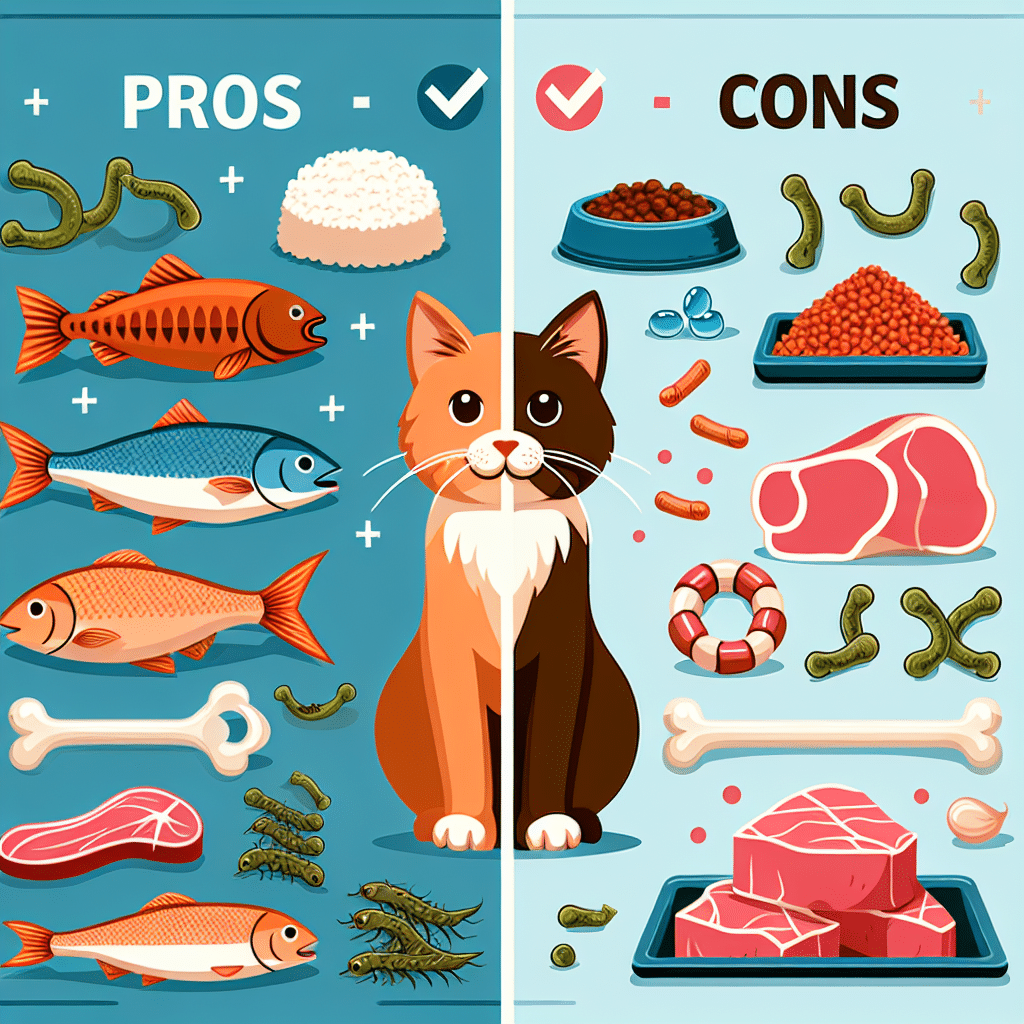Understanding Raw Cat Food Diet: Pros and Cons
What is Raw Cat Food?
Raw cat food diets consist of uncooked meats, organs, bones, and some fruits and vegetables. These diets are designed to mimic the natural prey that cats would consume in the wild. Raw feeding has gained popularity among cat owners who believe it aligns more closely with a cat’s ancestral nutrition needs.
Pros of Raw Cat Food Diet
1. Improved Coat Condition
Many advocates of raw food diets report shinier, healthier coats for their cats. The rich mix of omega fatty acids found in raw meats and fish can improve skin health and fur texture. These nutrients help maintain a healthy moisture level in the skin, preventing dryness and flakiness.
2. Increased Energy Levels
Cats on a raw food diet often display heightened energy levels. The high protein content and absence of fillers found in many commercial kibble diets can lead to increased stamina and vitality, promoting a more active lifestyle.
3. Better Digestive Health
Raw diets are typically easier for cats to digest compared to processed foods. The presence of natural enzymes and bacteria in raw meat aids in digestion and helps maintain a balanced gut flora. Many cat owners report fewer instances of vomiting and diarrhea after transitioning their cats to a raw food diet.
4. Weight Management
A raw food diet can help in maintaining a healthy weight for cats. The increased protein levels can have a satiating effect, reducing the urge for unnecessary snacking. When balanced correctly, these diets help prevent obesity associated with carbohydrate-rich commercial cat foods.
5. Reduced Dental Issues
Chewing on raw meaty bones can help clean a cat’s teeth, promoting dental health and reducing tartar buildup. This natural form of dental hygiene can lead to fewer gum diseases and vet visits for teeth cleanings.
6. Enhanced Palatability
Raw food diets are often more appealing to cats than processed foods. The rich flavors and scents of raw meat can be irresistible, which is beneficial for picky eaters or those with decreased appetites.
Cons of Raw Cat Food Diet
1. Nutritional Imbalance
One of the significant challenges of feeding a raw diet is ensuring it is nutritionally complete and balanced. Cats require specific vitamins and minerals, and creating a balanced raw cat food can be more complex compared to feeding commercial diets that are formulated to meet these needs. Improper balance can lead to serious health issues.
2. Risk of Pathogen Exposure
Raw meats can harbor harmful bacteria like Salmonella and E. coli, posing risks not only to the cat but also to humans in the household. Proper food handling practices, including thorough sanitization of preparation areas and feeding utensils, are crucial to mitigate these risks.
3. Increased Preparation Time
Preparing a raw food diet for cats can be time-consuming. Owners must source fresh ingredients, cut them appropriately, and ensure balanced nutrition, which can be a daunting task for busy pet owners. This can result in an inconsistency in feeding practices over time.
4. Cost Considerations
Raw feeding is generally more expensive than feeding commercial cat food. Quality raw ingredients can be costly, and the expense may not be feasible for every pet owner. The financial burden can lead to improper or inconsistent feeding practices that may harm a cat’s health.
5. Not Suitable for All Cats
Not every cat is a candidate for a raw diet. Cats with certain health issues, such as compromised immune systems or specific digestive disorders, may not tolerate raw food well. It is essential to consult with a veterinarian before introducing raw food to ensure it’s appropriate for the individual cat.
6. Difficult Transition
Switching a cat from a conventional diet to raw food is not always straightforward. Many cats are resistant to dietary changes, and some may require gradual transitions to avoid gastrointestinal distress. A sudden switch can lead to vomiting and diarrhea, and finding a method that works for your cat may take time.
Essential Considerations Before Starting a Raw Diet
1. Consult a Veterinarian
Before transitioning to a raw cat food diet, scheduling a consultation with a veterinarian is crucial. They can guide you on whether a raw diet is advisable based on your cat’s health status, age, and dietary needs.
2. Source Quality Ingredients
It is vital to use high-quality, fresh ingredients from reputable sources. Look for human-grade meats whenever possible, and consider establishing a relationship with a local butcher or supplier who understands the needs of raw feeders.
3. Balance Nutrients
Research appropriate recipes or consider working with a veterinary nutritionist to formulate a balanced raw diet. Ensuring that your cat receives adequate vitamins, minerals, and amino acids is essential for their long-term health.
4. Monitor Your Cat’s Health
Keep a close eye on your cat’s overall health after transitioning to a raw diet. Regular vet check-ups and health assessments can help identify any potential issues early on, ensuring that any dietary changes are beneficial.
Conclusion
When considering a raw cat food diet, weighing both the advantages and disadvantages is essential. While many cat owners tout the benefits of improved health, energy, and coat condition, potential risks such as nutritional imbalance and pathogen exposure should not be overlooked. Always prioritize your cat’s health and well-being above all when making dietary choices.
